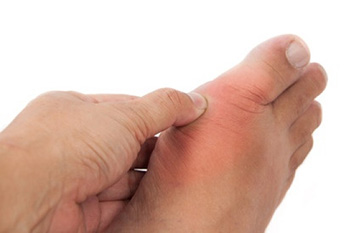Sesamoiditis

You likely think of your bones as part of a system, connected to one another by joints. Sesamoids are exceptions to this rule, "free floating" bones that offer a smooth surface for your tendons to slide over, creating a sort of pulley system for the muscles. The sesamoids in your feet help you as you walk, and without them, your big toe would lose some of its power and force. Sesamoiditis itself is pain or inflammation of the sesamoids.
Symptoms of Sesamoiditis
Sesamoiditis can generally be identified from other foot ailments due to the gradual onset of symptoms just beneath the big toe.
The most common symptoms include:
- The area is tender when direct pressure is applied.
- Mild pain occurs when walking barefoot or in thin soled shoes.
- Pain worsens while running or jumping.
- Pain is alleviated quickly with rest.
- In later stages, constant pain is present under the sesamoids.
There are numerous treatments available for sesamoiditis. Icing and resting the area can be helpful, and your podiatrist can prescribe orthotic devices and leg braces. Sesamoiditis does not commonly require surgery, but should be diagnosed by your trusted podiatrist before it worsens. If you suspect you may be suffering from this painful condition, schedule an appointment with our office today.

